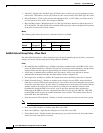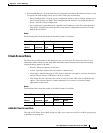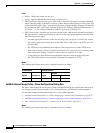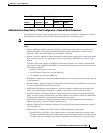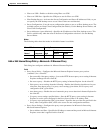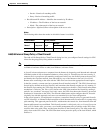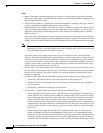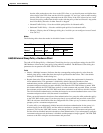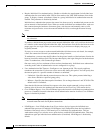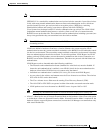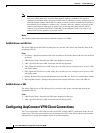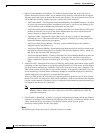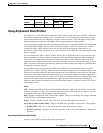
69-38
Cisco ASA 5500 Series Configuration Guide using ASDM
Chapter 69 General VPN Setup
ACL Manager
Fields
• Inherit—Determines whether the group policy obtains its client firewall setting from the default
group policy. This option is the default setting. When set, it overrides the remaining attributes in this
dialog boxing dims their names.
• Client Firewall Attributes—Specifies the client firewall attributes, including what type of firewall
(if any) is implemented and the firewall policy for that firewall.
• Firewall Setting—Lists whether a firewall exists, and if so, whether it is required or optional. If you
select No Firewall (the default), none of the remaining fields on this dialog box are active. If you
want users in this group to be firewall-protected, select either the Firewall Required or Firewall
Optional setting.
If you choose Firewall Required, all users in this group must use the designated firewall. The ASA
drops any session that attempts to connect without the designated, supported firewall installed and
running. In this case, the ASA notifies the VPN client that its firewall configuration does not match.
Note If you require a firewall for a group, make sure the group does not include any clients other than
Windows VPN clients. Any other clients in the group (including ASA 5505 in client mode and
VPN 3002 hardware clients) are unable to connect.
If you have remote users in this group who do not yet have firewall capacity, choose Firewall
Optional. The Firewall Optional setting allows all the users in the group to connect. Those who have
a firewall can use it; users that connect without a firewall receive a warning message. This setting is
useful if you are creating a group in which some users have firewall support and others do not—for
example, you may have a group that is in gradual transition, in which some members have set up
firewall capacity and others have not yet done so.
• Firewall Type—Lists firewalls from several vendors, including Cisco. If you select Custom Firewall,
the fields under Custom Firewall become active. The firewall you designate must correlate with the
firewall policies available. The specific firewall you configure determines which firewall policy
options are supported.
• Custom Firewall—Specifies the vendor ID, Product ID and description for the custom firewall.
–
Vendor ID—Specifies the vendor of the custom firewall for this group policy.
–
Product ID—Specifies the product or model name of the custom firewall being configured for
this group policy.
–
Description—(Optional) Describes the custom firewall.
• Firewall Policy—Specifies the type and source for the custom firewall policy.
–
Policy defined by remote firewall (AYT)—Specifies that the firewall policy is defined by the
remote firewall (Are You There). Policy defined by remote firewall (AYT) means that remote
users in this group have firewalls located on their PCs. The local firewall enforces the firewall
policy on the VPN client. The ASA allows VPN clients in this group to connect only if they
have the designated firewall installed and running. If the designated firewall is not running, the
connection fails. Once the connection is established, the VPN client polls the firewall every 30
seconds to make sure that it is still running. If the firewall stops running, the VPN client ends
the session.
–
Policy pushed (CPP)—Specifies that the policy is pushed from the peer. If you choose this
option, the Inbound Traffic Policy and Outbound Traffic Policy lists and the Manage button
become active. The ASA enforces on the VPN clients in this group the traffic management rules
defined by the filter you choose from the Policy Pushed (CPP) drop-down menu. The choices
available on the menu are filters defined on this ASA, including the default filters. Keep in mind



